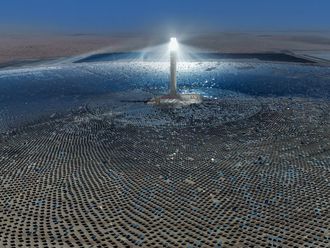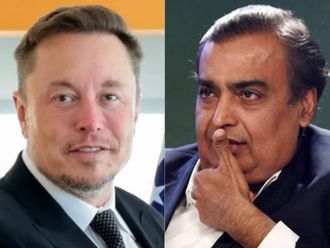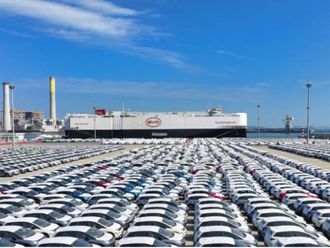Paris
Opec members Iran and Venezuela could lose almost 30 per cent of their oil output next year due to US sanctions and economic upheaval, requiring extra supplies from the group’s Gulf members, the International Energy Agency said.
In its first detailed forecast for 2019, the IEA said new oil output from outside Opec — in particular US shale — should be enough to cover growth in demand, but nations such as Saudi Arabia may still need to boost output to compensate for lost supply from other members.
The Organisation of Petroleum Exporting Countries will meet next week and debate whether to restore production it halted last year. The IEA, which oversees the use of emergency oil stockpiles in major economies such as the US and Japan, made a prominent statement in its monthly report about its readiness avert supply disruptions.
“Even if the Iran-Venezuela supply gap is plugged, the market will be finely balanced next year, and vulnerable to prices rising higher in the event of further disruption,” the Paris-based agency said. “It is possible that the very small number of countries with spare capacity beyond what can be activated quickly will have to go the extra mile.”
Contentious debate
Opec faces intense political pressure as oil’s rally to a three-year high above $80 a barrel has spurred warnings about the threat to the global economy, and drawn fire from US President Donald Trump. Saudi Arabia says it’s ready to temper prices by raising supply, setting the stage for tough talks with fellow Opec members when they gather in Vienna on June 22.
American foreign policy is upping the ante for the kingdom, as President Trump re-imposes sanctions on Saudi Arabia’s political foe, Iran, that will almost certainly strain global oil supplies.
Iranian output could be curbed next year by about 900,000 barrels a day, or about 23 per cent, the IEA said. The agency stressed the estimate is a “scenario” rather than a forecast, based on the impact of previous sanctions.
Venezuela, where production has already collapsed to the lowest in decades as an economic crisis batters oil infrastructure, could see its output fall by a further 550,000 barrels a day, or 40 per cent.
Opec’s Middle East producers, led by the Saudis, are capable of filling that gap “in short order” with an additional 1.1 million barrels a day if they return to the record levels pumped in late 2016. Next year, they may have to go even further.
Shale growth
In theory, meeting the growth in world oil demand next year shouldn’t be a problem as US shale-oil production continues to rise. Consumption will increase by 1.4 million barrels a day in 2019, the same pace as this year, while producers outside Opec will add 1.7 million a day, according to the IEA.
As a result, about 31.6 million barrels a day will be needed from Opec in 2019, slightly less than the amount they pumped in May.
Yet as Iran and Venezuela decline, maintaining total supply levels will require extra effort from the Saudis and other Gulf members. Oil stockpiles in developed nations have fallen to their lowest in three years, and will shrink further if the Gulf nations keep output steady, the agency said.
The IEA’s message that it “stands ready to advise its member governments on any action that might be necessary” will likely have resonance for Opec policymakers. In 2011, when the cartel didn’t respond to the agency’s recommendation for more supply during Libya’s civil war, IEA nations unlocked their emergency stockpiles.
Russia’s Putin to meet Saudi Crown Prince Mohammad, discuss oil deal — Kremlin
Russian President Vladimir Putin plans to meet Saudi Crown Prince Mohammad Bin Salman when he visits Russia for the opening of the soccer World Cup, Kremlin spokesman Dmitry Peskov told reporters on Wednesday.
Peskov said the two would discuss the global oil production cut agreement which Saudi Arabia and Russia are leading, but did not plan to discuss an exit from the deal.
Crown Prince Mohammad is among leaders of many countries who will visit Russia for the World Cup opening, Peskov said.












